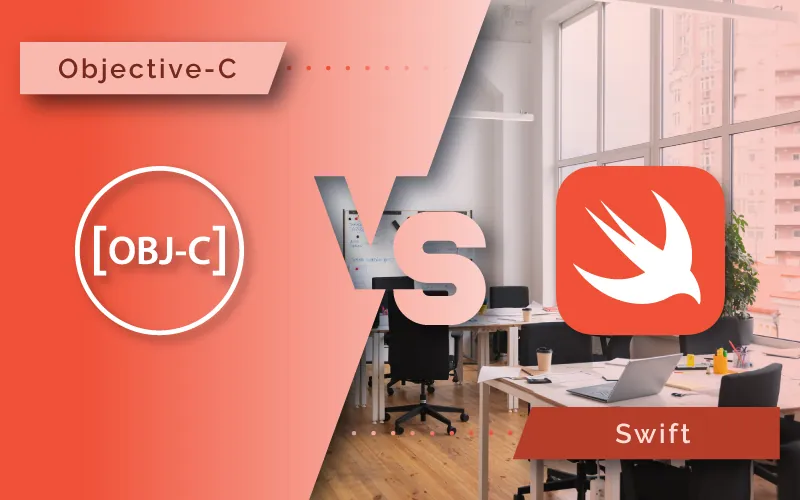In this article, we elaborate on the features and advantages of Swift and Objective-C to distinguish what might be the best language to develop apps for Apple devices.
Swift: features and benefits
Swift is a modern, open source programming language developed by Apple for building apps for iOS, macOS, watchOS, and tvOS.
Some of its features and advantages include:
- Easy to learn. Swift was designed to be easy to learn for new programmers as well as experienced developers. Its syntax is simple and easy to read, which makes it faster to write code compared to other languages.
- Safe. It was built with security in mind, which means it has a set of security features built right into the language. This helps prevent common programming errors such as memory overflows and null errors, making your code safer and more reliable.
- Fast. Swift is one of the fastest programming languages available. It is optimized for performance and can run code much faster than other languages.
- Interactive. It has a unique feature called “playgrounds”, which allows developers to test their code in real time, without having to compile the entire code. This makes the development and debugging process easier, which means developers can work faster and more efficiently.
- Open Source. Swift is an open source programming language, which means that anyone can contribute to its development and improvement. This has led to an active and growing community of developers working together to improve and expand the language.
Objective-C: features and benefits
Objective-C is an object-oriented programming language, created by Apple, to develop applications for iOS and macOS. It has an active and constantly growing developer community that offers a wealth of resources and support.
Some of its features and benefits include:
- Object oriented. Objective-C is an object-oriented language, which means that it focuses on objects and the interactions between them. This makes it easier to create modular and reusable code.
- Dynamic. It is a dynamic programming language, which means that it allows the creation of classes and methods at run time. This allows developers to add new functionality to an application without having to recompile the entire code.
- Easy to learn. Objective-C has a unique syntax that can take some getting used to, but once you understand it, it’s easy to read and write. Also, there are a lot of resources and documentation available online to help new programmers learn the language.
- Compatible with C. It is compatible with the C programming language, which means that developers can use both languages together in the same application. This makes it easier for developers to migrate their existing code to Objective-C, or use existing code in new Objective-C applications.
- Appropriate for high performance applications. Objective-C is a low-level programming language that offers more control over the underlying hardware. This means that developers can create high-performance apps that take full advantage of a device’s hardware.
These are the differences between Swift and Objective-C
- While Swift is a newer and more modern programming language, Objective-C is older and has been used for many years to develop iOS and macOS apps.
- Swift has a cleaner syntax that is easier to read, while Objective-C has a more complex syntax and can be more difficult for novice programmers to understand.
- While Swift is safer and avoids common errors like null pointers, Objective-C allows these errors and requires programmers to handle them explicitly.
- Swift is faster and more efficient than Objective-C as it has been designed to take advantage of the latest hardware technologies.
- Swift is easier for novice programmers to learn as it has an easier to understand syntax, while Objective-C can be more difficult to learn due to its complexity. Swift is more modern and has a syntax closer to other modern programming languages, such as Python or JavaScript.
In conclusion, Swift and Objective-C are two different programming languages that are used to develop apps for iOS and macOS. Generally speaking, Swift is a better choice for new projects, while Objective-C is still a viable alternative for maintaining and updating existing projects.










